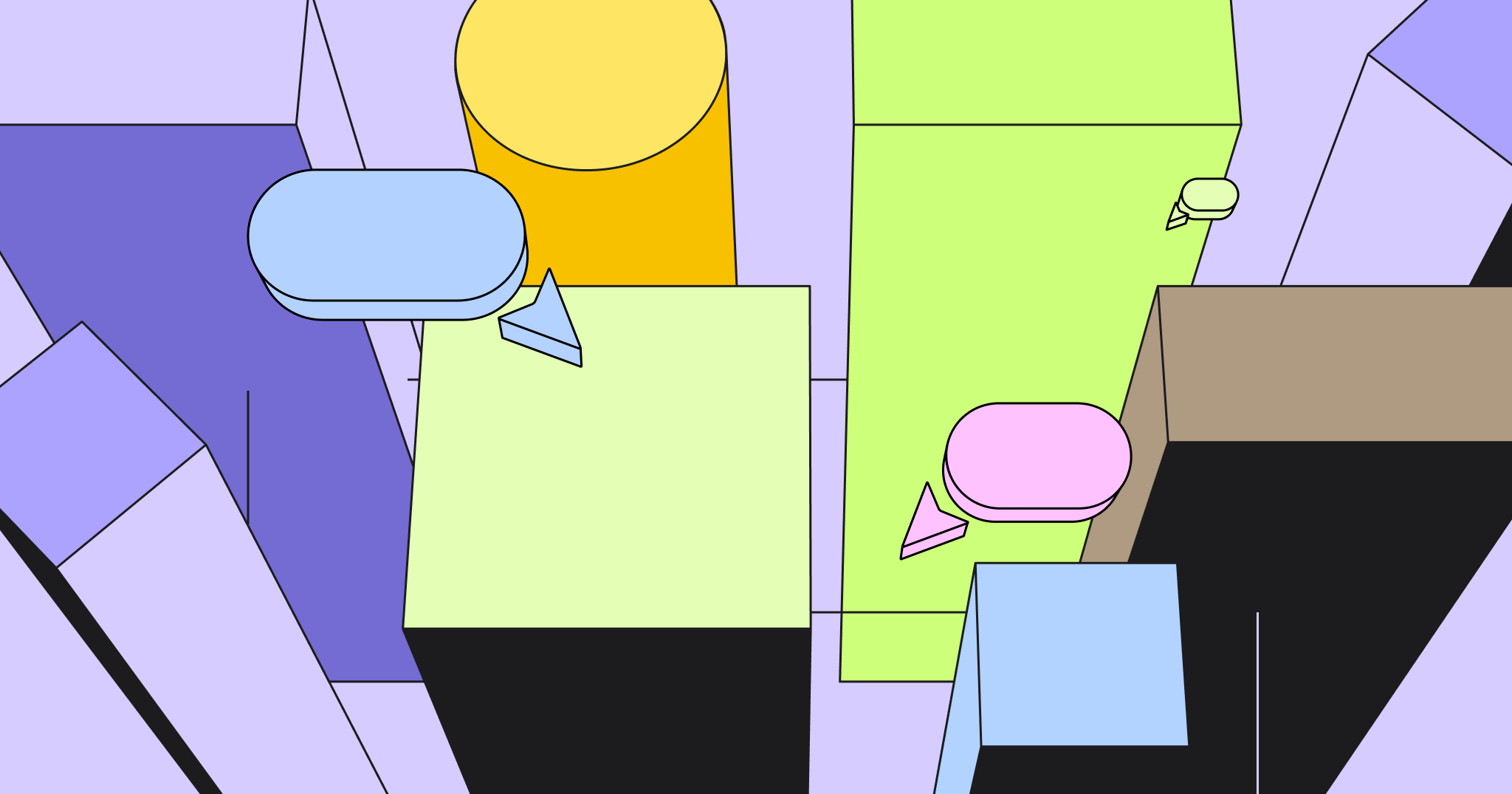Unlike verbal or word-based thinking, which is sequential and linear, visual thinking uses imagery and spatial representation to organize information. For visual thinkers, this way of laying out information sparks creativity and imagination, as it helps them comprehend concepts, identify new patterns, and make connections.
In Visual Thinking, Temple Grandin says, “visual thinkers see images in the mind’s eye that allow them to make rapid-fire associations.” Object visualizers, who think in pictures, tend to excel at design and problem-solving, while spatial visualizers, who think in patterns, tend to be mathematically inclined and excel at abstract and systemic thinking.
Each person falls along a visual-verbal thinking continuum, so incorporating visual thinking tools in the workplace can help you unlock your team’s unique creative superpowers.
How visual thinking can help teams be more creative
Visual thinking is a powerful tool for enhancing creativity, and ultimately innovation. Whether you’re brainstorming new ideas or solving a difficult problem, here are a few ways you can use visual thinking at your next team meeting.
Organize complex ideas to see the big picture
In her book The Extended Mind, Annie Murphy Paul says, “our powers of spatial cognition can help us to think and reason effectively, to achieve insight and solve problems, and to come up with creative ideas.”
She illustrates this concept with an example from the prolific author Robert A. Caro, who extends his thinking into physical space by covering an entire wall in his office with an outline of his current work in progress. By turning a mental map into a physical artifact, he’s able to free up cognitive space, observe how ideas relate to one another, identify gaps in the storyline, and easily follow the narrative flow without getting bogged down in details.
Teams can take a similar approach by leveraging mind maps or storyboards to visualize complex ideas.
Think outside the box and make new connections
Even something as simple as sticky notes can fuel creativity and innovation by connecting seemingly unrelated ideas to form something completely new. They can easily be rearranged, added, or removed, allowing you to mix and match ideas, and look at problems from different perspectives.
I once worked with a data-driven team who ran A/B tests and dug into dense spreadsheets to make product decisions. This type of structured, analytical thinking supported incremental improvements, but it wasn’t moving the needle in the way they hoped. So they shifted from “number-crunching mode” to “brainstorming mode.”
By taking a step back to ideate together with online sticky notes, the team was able to get unstuck. They came up with a new concept that resulted in a 10% revenue gain. While there’s a time and place for data-driven analysis, sticky notes can help you unlock new ideas.
Reframe problems to develop innovative solutions
When approaching a difficult problem, it’s easy to default to the most obvious solution without examining whether you’re solving the right problem in the first place. The famous slow elevator problem illustrates this concept. If you’re practicing linear thinking, you’ll likely jump straight to the question, “How do we speed up the elevator?”
But if you remove narrow constraints and work with visual tools to tackle the problem, like a mind map or prioritization matrix, you’ll see the problem in a new way and will likely come up with more innovative solutions.
In the case of the slow elevator, it can be reframed not as an issue with the elevator’s mechanics, but as an issue with people being frustrated with the wait. If you think about solving that problem, you can unlock a whole new set of ideas, like installing mirrors or playing music to help people pass the time more quickly.
Leverage visual thinking templates to jumpstart creativity
Miro’s vast library of templates can help you use visual thinking to unlock creativity and innovation. Here are a few examples to get you started.
- Mind Map template: Mind maps allow you to use free association to make new connections between seemingly unrelated concepts. The ability to expand ideas anywhere on the map helps you flesh out and iterate as needed.
- 2×2 Prioritization Matrix template: This matrix facilitates decision-making and strategic planning. Use sticky notes to jot down ideas or tasks, then use the grid to plot items based on their importance and urgency. Viewing your options mapped out (rather than in a simple list) creates clarity and enables teams to make better decisions.
- Flowchart template: This template visually illustrates how different steps relate and interconnect in a set of processes, which can be especially helpful when organizing complex or abstract concepts.
- Storyboard template: Storyboards map out different user scenarios and can help you visualize how customers might think, feel, and act. They also break down each step in the customer journey into more manageable elements, so you can better pinpoint opportunities and challenges in the user experience.
The next time your team needs to get their creative juices flowing, consider forgoing note-taking in a document or spreadsheet and instead leverage visual thinking to take your ideas to the next level.




